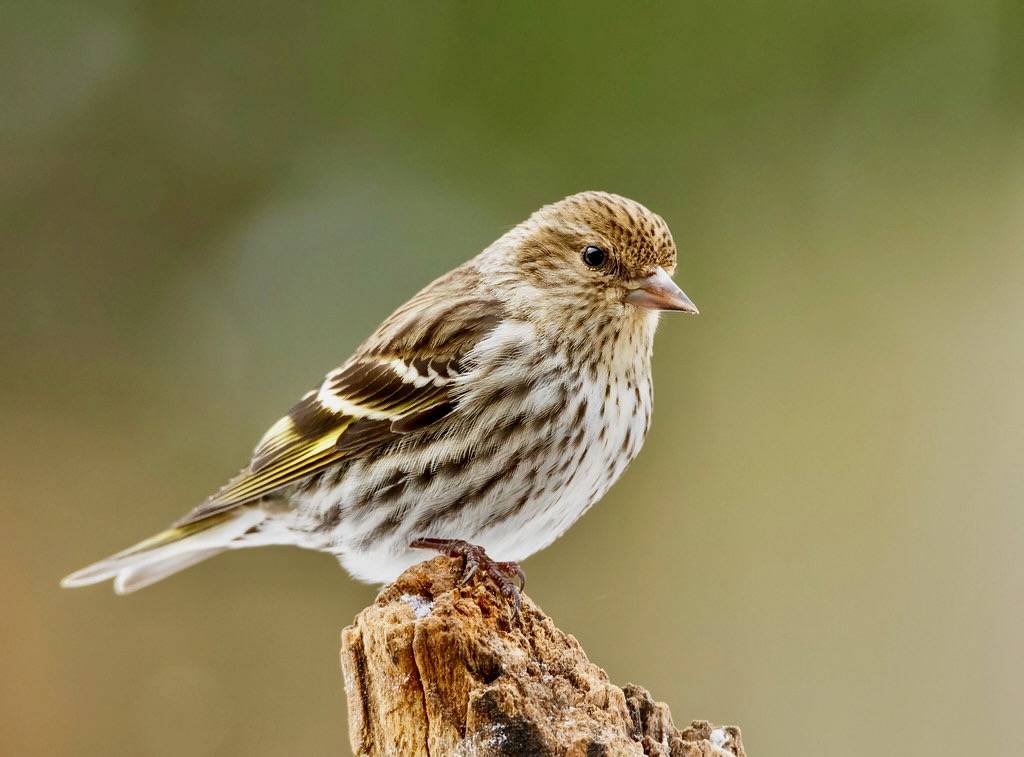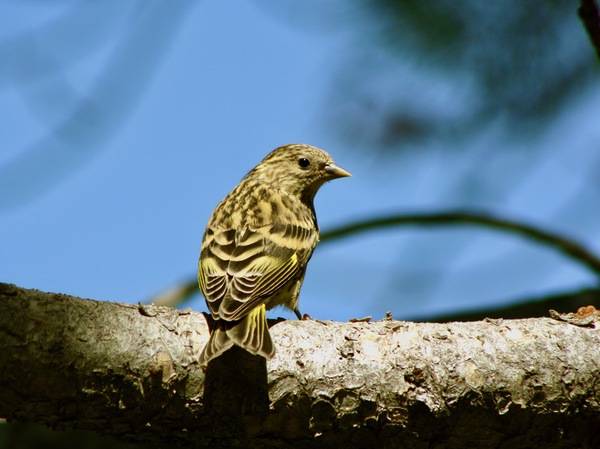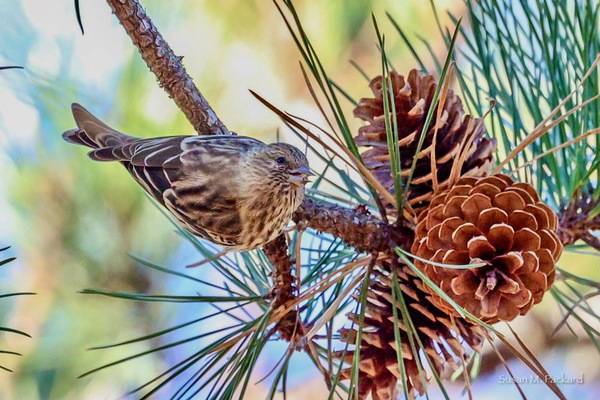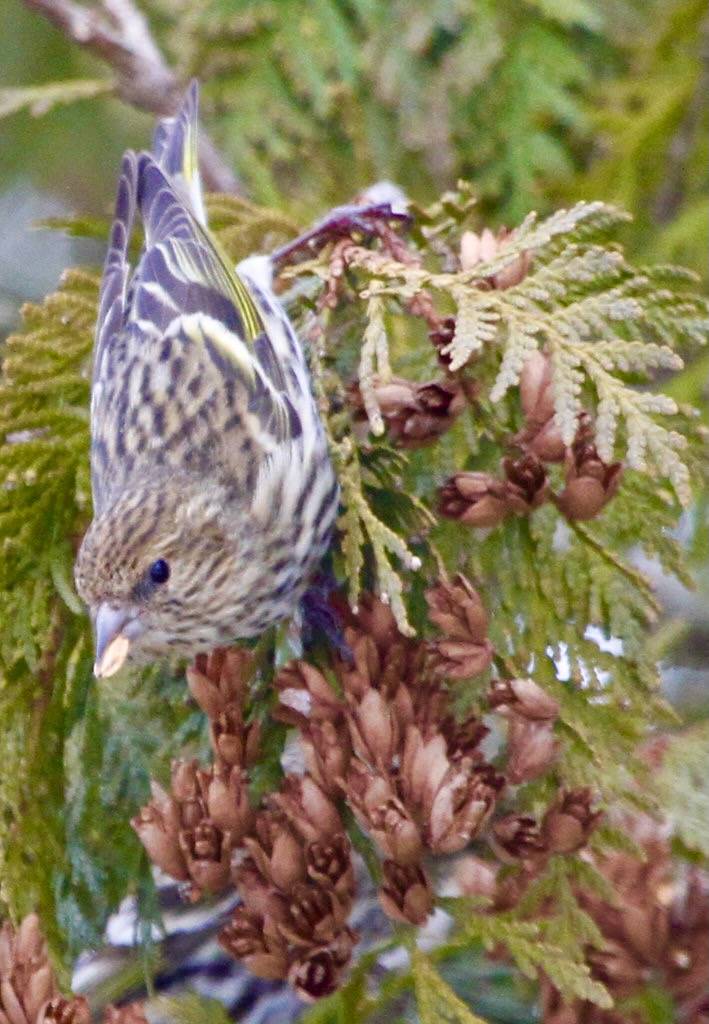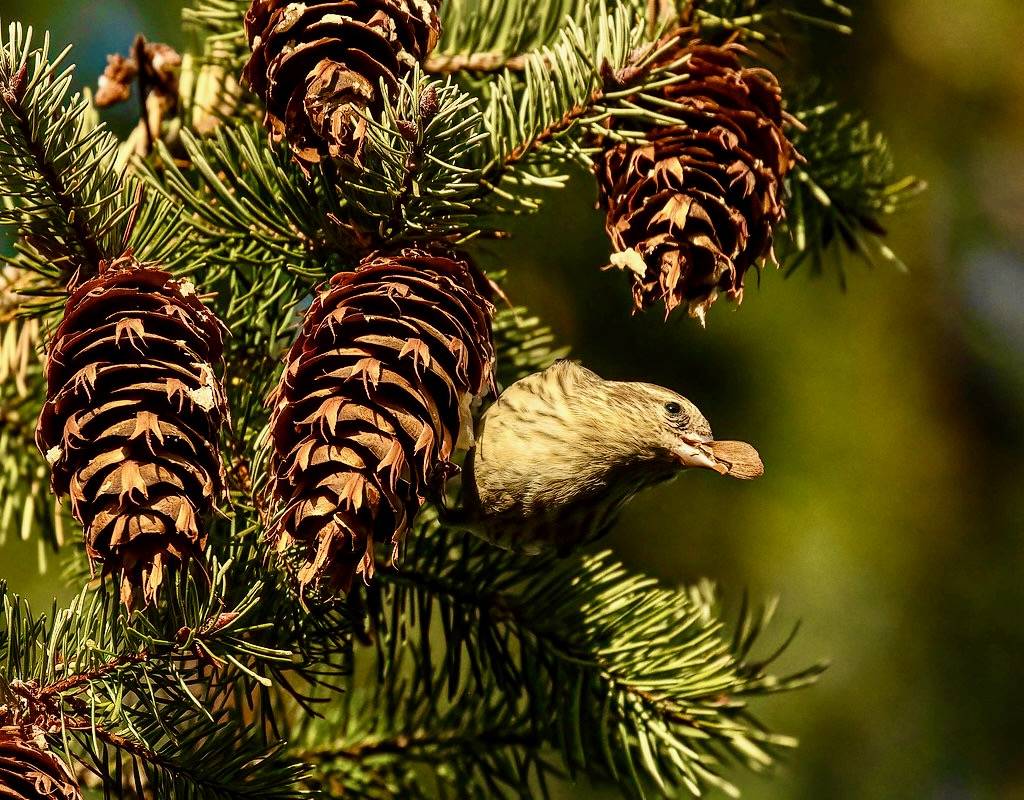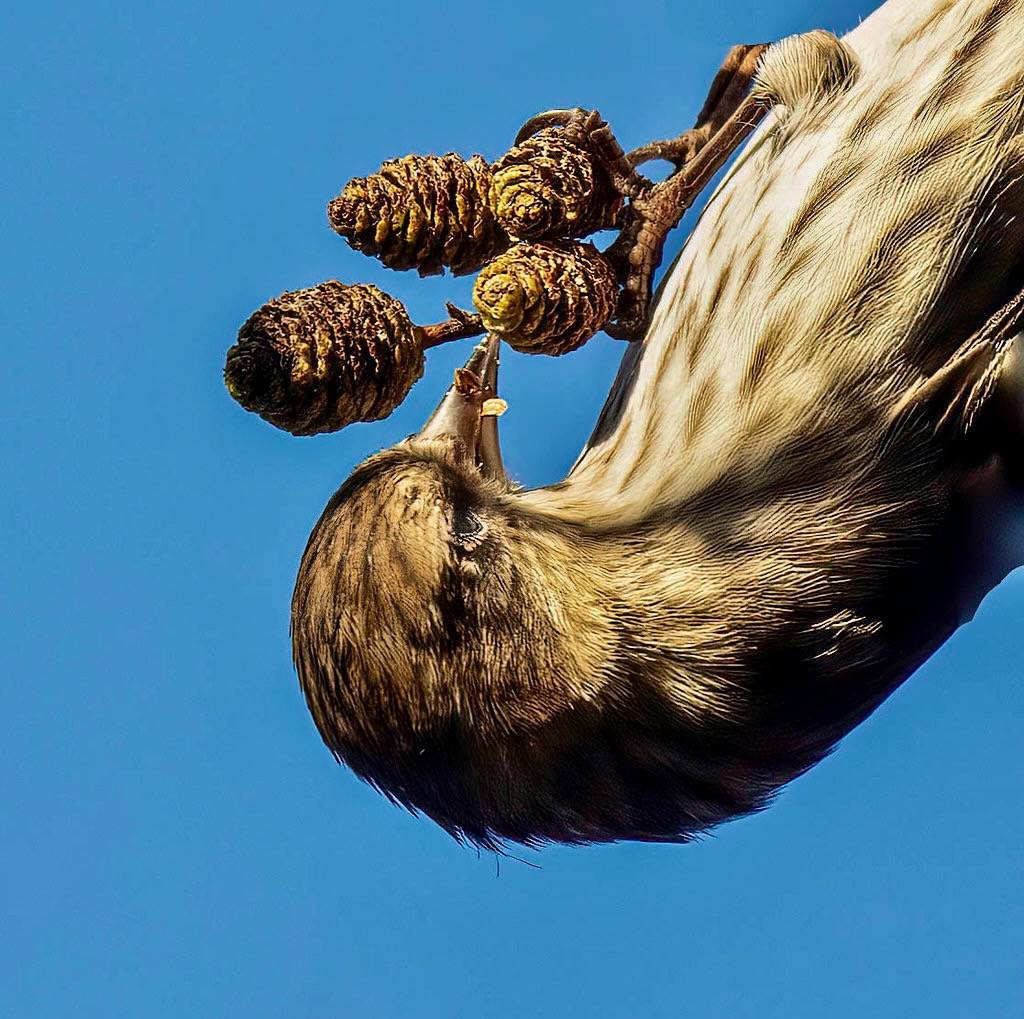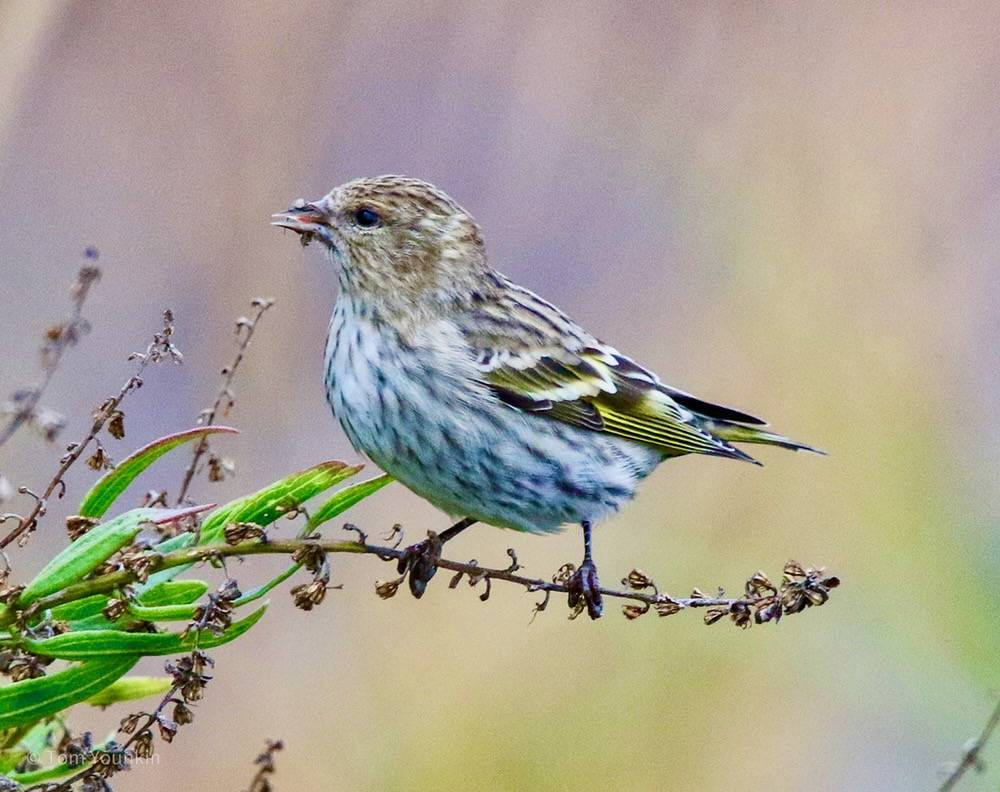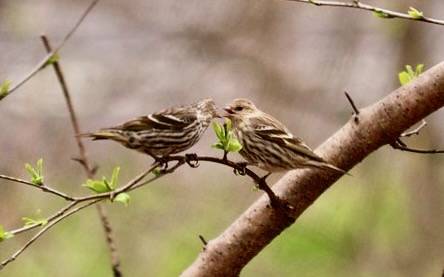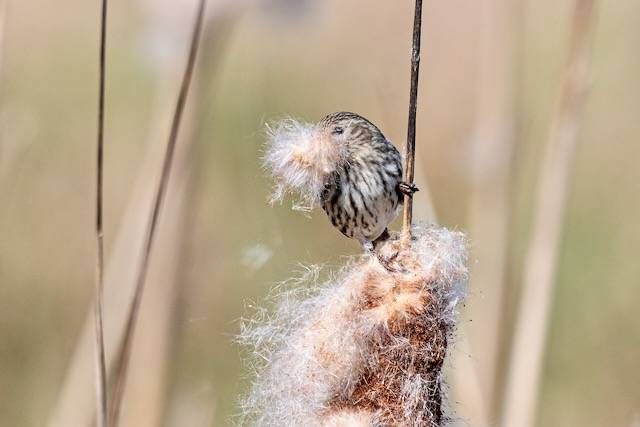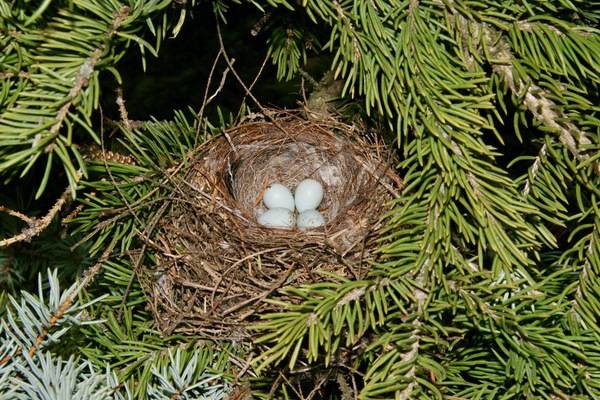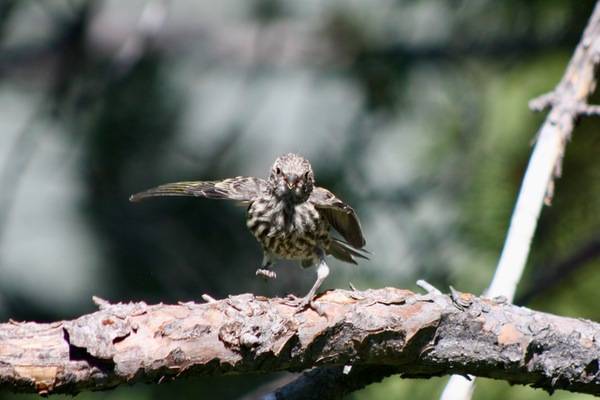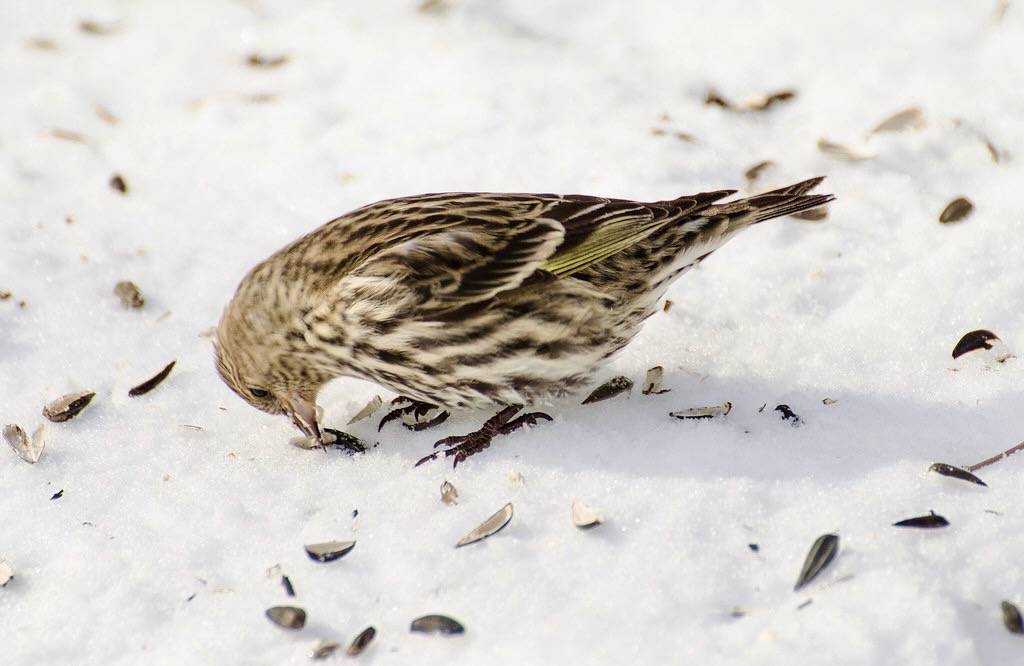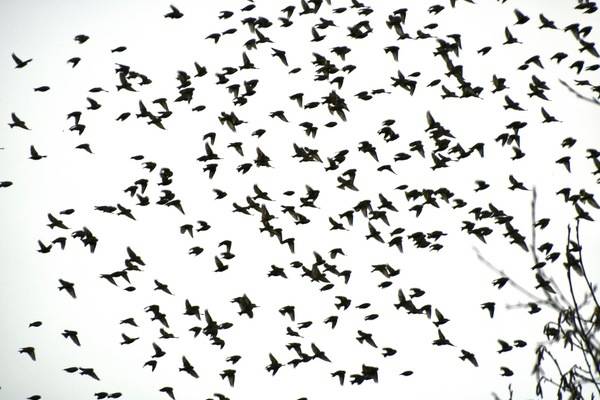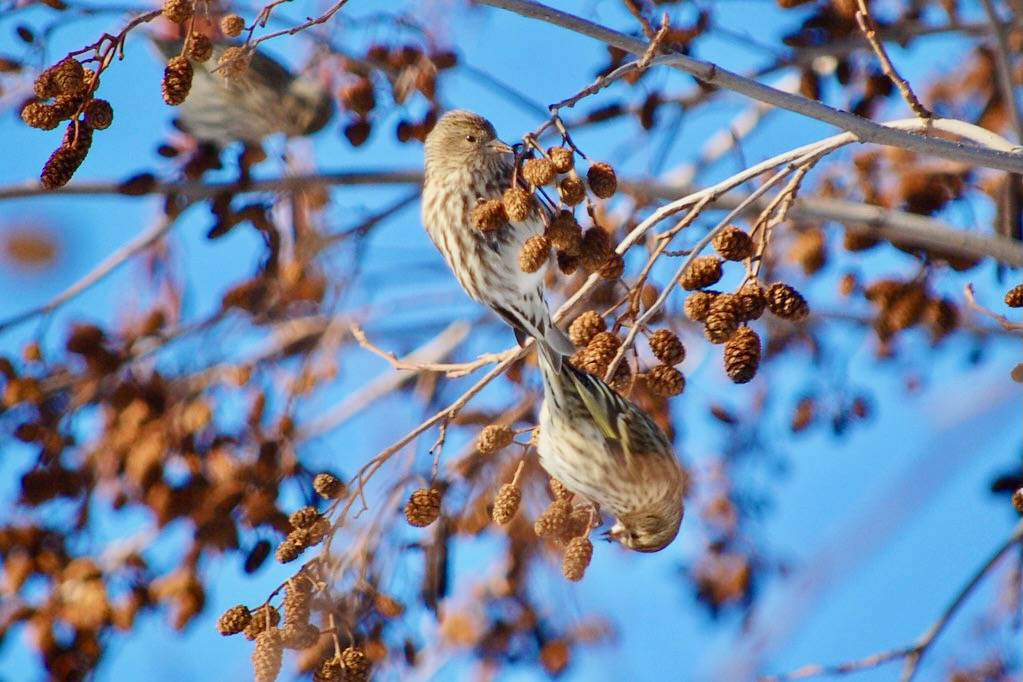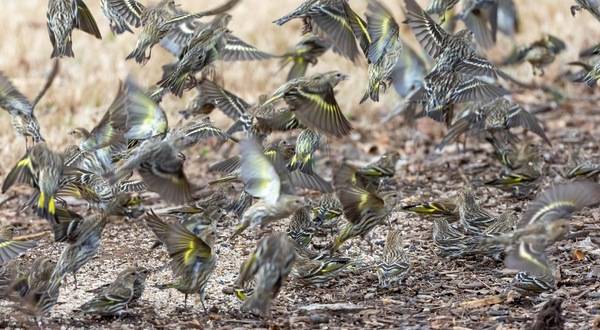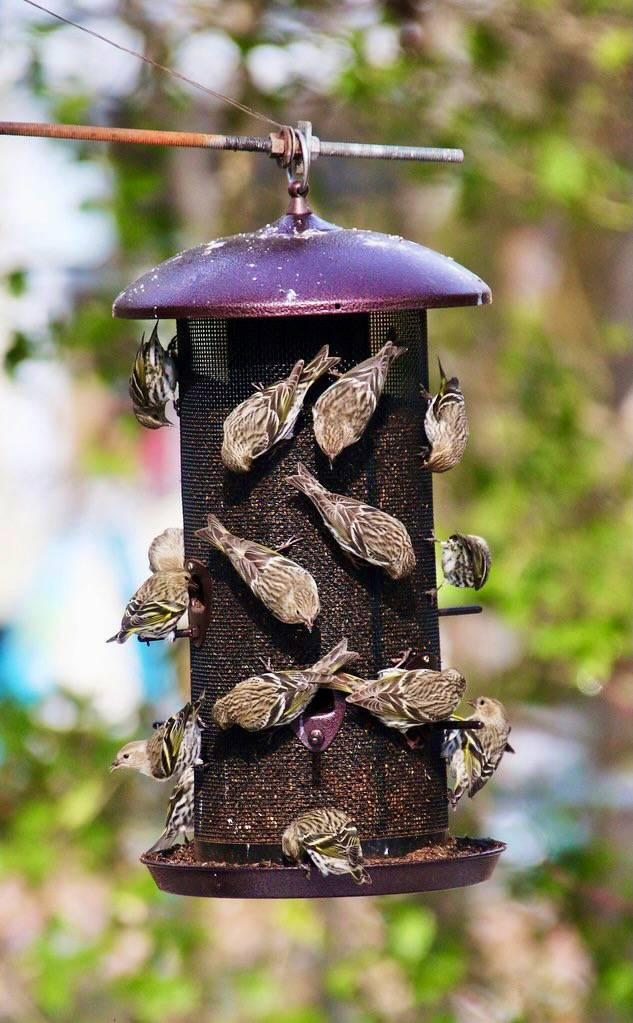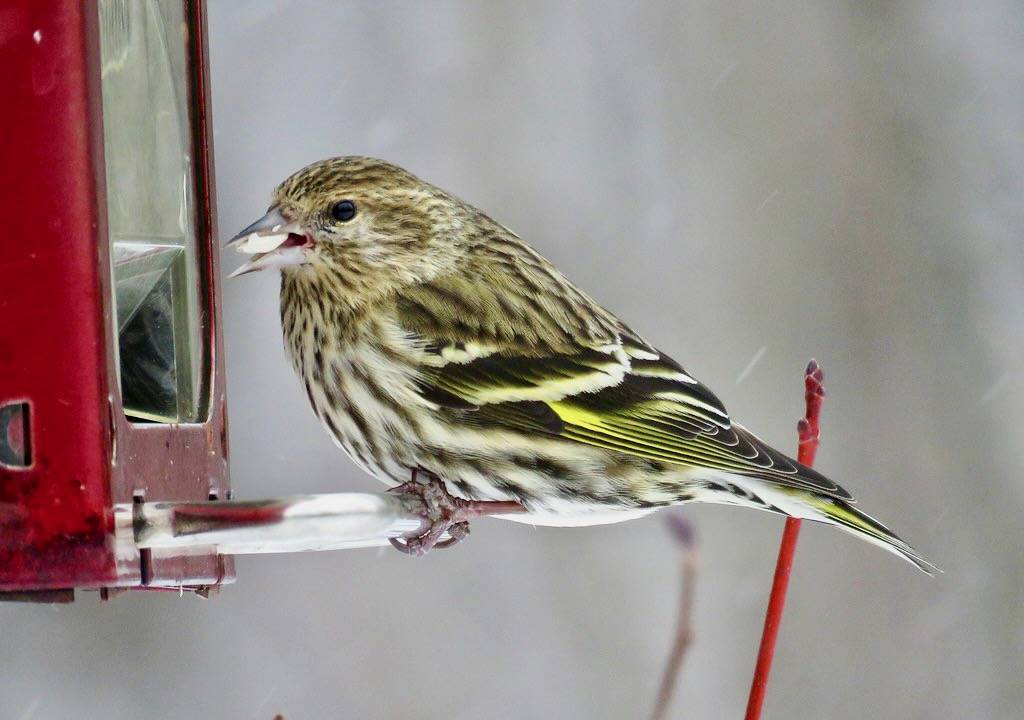Pine Siskin
Based on available data from 2002 through 2023, the Pine Siskin has only been recorded at Salter Grove once in late October 2020, appearing as a cohesive flock of about 30 birds. While in the park, they feasted on the seeds of the maritime marsh-elder, a shrub that grows along the high tide line of the causeway and Marsh Trail. The Siskins moved on after a few days once these shrubs were cleaned of the year's seed crop.
The Pine Siskin usually inhabits Canada's boreal forest where it depends on the seeds of hemlocks, pines, and spruces, as well as the small fruits of some deciduous trees, shrubs, and herbaceous plants. When the food supply is sufficient to provide for the winter months, it does not venture far from the breeding grounds. It is able to increase metabolic rate to withstand very cold temperatures. It can also store enough in its crop (part of the esophagus) to provide enough energy to last several hours through especially cold nights.
However, when coniferous seed production falls short every few years, as it did in 2020, large flocks of Pine Siskins wander southwards across the continent until they find an area abundant in seeds. This is why in some years, backyard feeders south of their breeding range are crowded with siskins whereas in other years there are none to be seen. Notably, 2020 was one of the largest irruption year and Pine Siskins were recorded as far south as Bermuda.
Extensive banding studies show that unlike other migratory species, the nomadic Pine Siskin does not reliably return to the same breeding ground year after year. Its movement is driven by the location of abundant seed sources. After venturing south because of low seed production, siskins may remain to breed at the new location as long as food is plentiful. Large planted conifers near suburban feeders readily become new nest sites. As soon as food runs out, however, they will move again.
As exciting as it may be to host a flock of Pine Siskins, keepers of bird feeders beware! Their gregarious nature leads to periodic outbreaks of Salmonella not only among siskins but also in other species visiting the same feeders. Symptoms of this bacterial infection may include swollen eyelids, fluffed up plumage, and lethargic behavior, but infected birds are not always obvious. Since Salmonella strains in birds can be dangerous to humans, it is recommended to always wash hands and feeders if infected birds are ever suspected.
For more information:
https://www.allaboutbirds.org/guide/Pine_Siskin
https://www.audubon.org/field-guide/bird/pine-siskin
https://animaldiversity.org/accounts/Carduelis_pinus/
https://www.audubon.org/news/-pine-siskin-finch-irruption-fall-2020
https://feederwatch.org/learn/articles/tracking-pine-siskin-movements/
https://www.wildliferescue.ca/2021/01/07/salmonella-outbreak-in-siskins/

